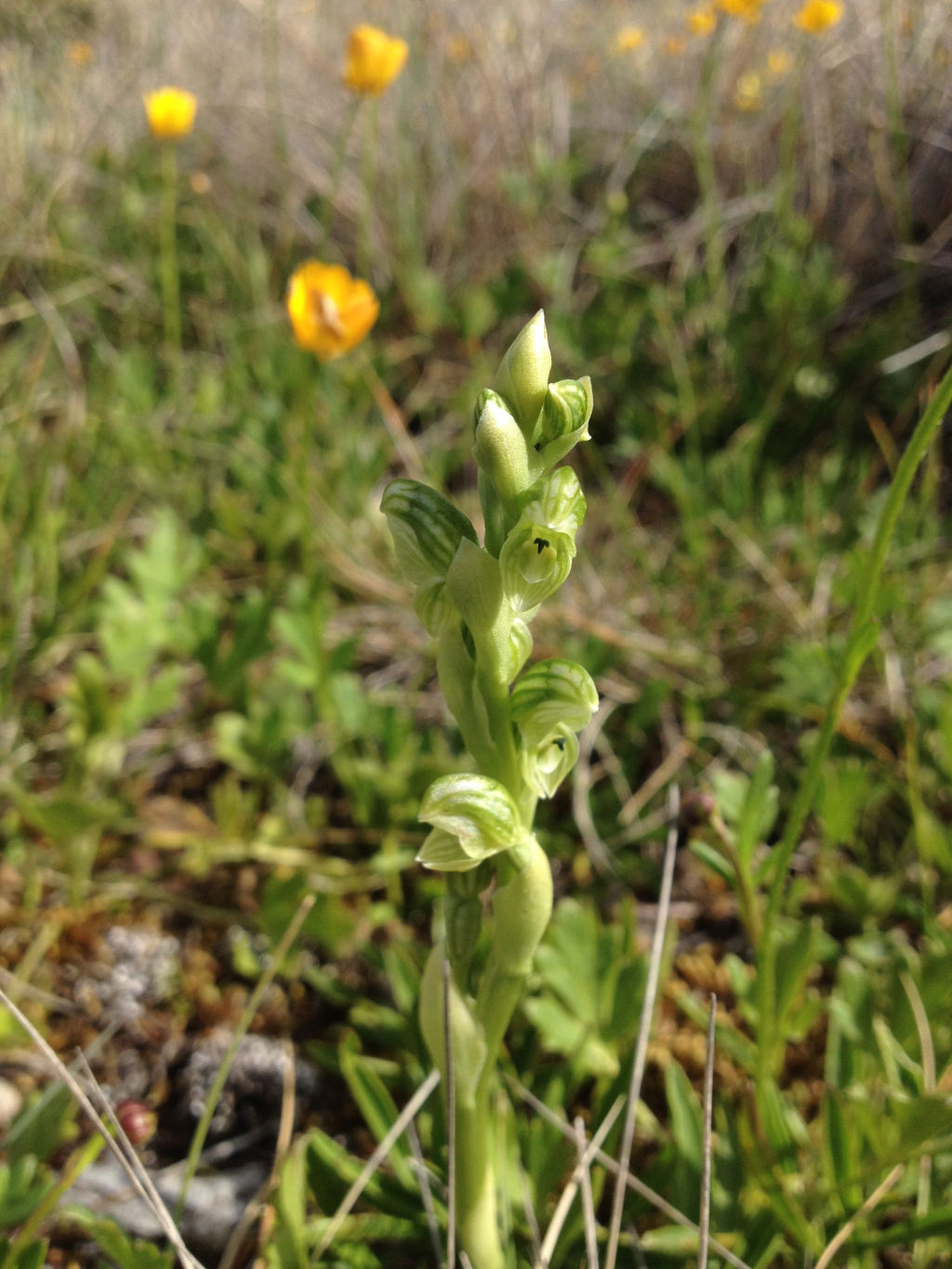Pterostylis crassicaulis
(D.L.Jones) G.N.Backh.Flowering plant to 30 cm tall, stem leaves 4–6, loosely sheathing. Rosette leaves 5–8, elliptic to obovate, 2–4.5 cm long, 1–2.5 cm wide, shortly petiolate to nearly sessile, crowded, margins entire. Flowers 5–18, crowded, 9–11 mm long, bluish green and white with darker lines, shiny; galea curved throughout, suddenly decurved near the apex; dorsal sepal acute; lateral sepals deflexed, conjoined part broadly ovate in outline when flattened, 6–7.5 mm long, 6–8 mm wide, margins incurved, concave, free points broadly triangular, c. 3 mm long, parallel; petals asymmetrical, broadest near the base, obtuse. Labellum pale green with a dark green basal appendage; lamina obovate-oblong, c. 2.5 mm long, c. 2.3 mm wide; appendage c. 1.5 mm long, with a prominent central beak pointing forward. Flowers Dec.–Jan.
EGU, HSF, HNF, MonT, VAlp. Also NSW, ACT. Found in alpine and subalpine grasslands and herbfields of eastern Victoria, on well-drained to seasonally moist brown to black loams.
See note under Pterostylis cycnocephala.
Pterostylis spissa from stony rise grasslands is less robust, has narrower rosette leaves and slightly smaller, bright green flowers.
 Spinning
Spinning
